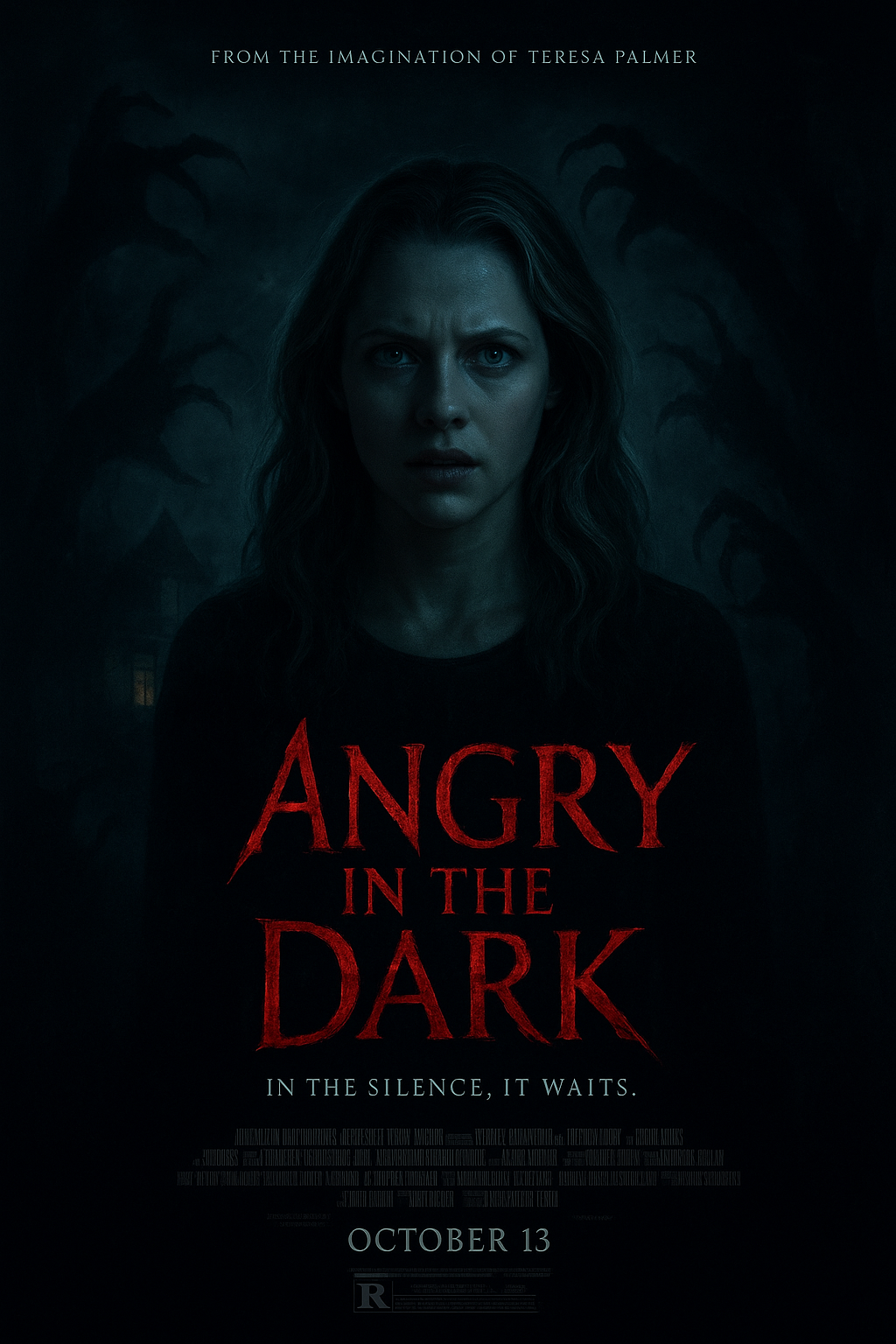The horror genre thrives on fear, suspense, and the unknown. Angry in the Dark, the latest psychological horror film starring Teresa Palmer, delivers all of this and more in a chilling cinematic experience that lingers long after the credits roll. From its opening sequence to its final shocking twist, this movie is a masterclass in tension and atmosphere.
Directed with precision and crafted to disturb the soul, Angry in the Dark is more than just a film about shadows and spirits—it’s a journey into the human mind, and what happens when repressed emotions manifest in terrifying ways. Teresa Palmer takes on the lead role with a gripping performance, embodying a woman caught between reality and nightmare.
The story follows a young mother who moves into an isolated countryside house in search of peace, only to uncover that the silence hides something sinister. As darkness falls each night, strange sounds, claw-like shadows, and whispers begin to torment her. The deeper she investigates, the more she realizes the evil lurking in the house is tied to her own anger, regrets, and suppressed trauma.
One of the strengths of Angry in the Dark lies in its use of atmosphere. The film leans heavily on lighting and sound to create unease. Faint footsteps, flickering lights, and distorted shadows fill the screen with dread. Rather than cheap jump scares, the movie builds genuine terror from anticipation, keeping the audience clenched in their seats.
Teresa Palmer shines as the emotional anchor of the story. Her descent from a strong, hopeful character to one unraveling in paranoia and fear is both believable and heartbreaking. With every scream, whisper, and silence, she immerses viewers into the same suffocating fear her character endures.
Supporting characters play a vital role, but they are kept at the periphery, which makes the film feel even more isolated and unnerving. This decision works in the film’s favor, trapping both the lead and the audience in the house’s claustrophobic grip.
The cinematography adds another layer of brilliance. Shadows are used as characters themselves, creeping, clawing, and stretching across walls like manifestations of rage. The blending of natural darkness with supernatural suggestion keeps audiences questioning what is real and what is imagined.
What makes Angry in the Dark stand out in the crowded horror landscape is its theme. It’s not just about a haunted house—it’s about the anger that festers in silence, and how the dark can twist unresolved emotions into something monstrous. This psychological angle elevates the film, making it a haunting metaphor as much as it is a terrifying story.
The soundtrack is equally unforgettable. Low, rumbling tones and distorted whispers amplify the sense of dread. Every sound feels deliberate, pulling viewers deeper into the nightmare. By the time the climactic final act arrives, the sound design ensures that the audience feels just as trapped and hunted as the protagonist.
The official release date was October 13, perfectly timed for the Halloween season. Horror fans flocked to theaters eager for a new psychological thriller, and Angry in the Dark quickly became a must-watch for those who crave an experience that chills to the bone.
Critics have praised the film for balancing emotional storytelling with genuine scares. While some horror films rely heavily on gore or cheap shocks, Angry in the Dark thrives on suspense and emotional intensity, making it a standout in Teresa Palmer’s career.
In the end, Angry in the Dark is not just a movie—it’s an experience. It forces viewers to confront their own fears of silence, isolation, and the shadows that lurk when the lights go out. Teresa Palmer delivers a performance that will be remembered as one of her most haunting roles, and the film itself cements its place among the best modern horror releases.



